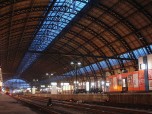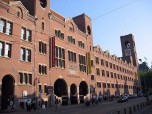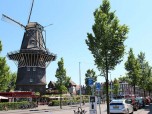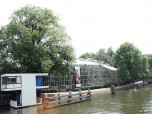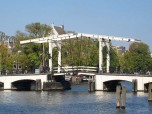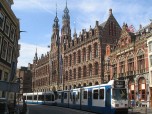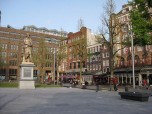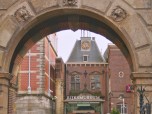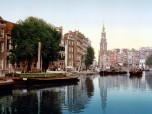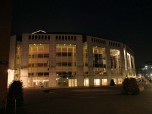The Vondelpark is the largest park in the Dutch capital city of Amsterdam. It is extremely popular with both residents and tourists. Each year it is visited by around 10 million people. The park is situated near to the center of Amsterdam, close to a number of important tourist destinations such as the Rijksmuseum and the Van Gogh Museum. Concerts and other open-air events are frequently staged here in the summer months.
Park History
The origin of the park came in 1864 when a number of Amsterdam’s most prominent citizens came together to discuss plans for a public park in the city. This group managed to buy 20 acres of land near the edge of the city, and to commission Jan David Zocher, a well-known landscape architect, to design the park. The intention was that it should resemble an English country landscape, since in the 1860s this was considered a highly fashionable appearance. Zocher and his son, Louis Paul, worked together and drew on their training in Rome and Paris to create the Vondelpark’s pathways and pools.
At the time of its initial opening in 1865, the park was known simply as Nieuwe Park, meaning New Park. The title Vondelpark was only adopted two years later. At this time, a statue of Joost van den Vondel, a famous Dutch poet, was added. The park committee found the funds to increase the size of the park, and by 1877 it had achieved its modern area of 111 acres. As time went on and Amsterdam continued to grow, the park became more centrally situated within the city.
Other improvements were added around this time, such as a bandstand which quickly became home to concerts of popular music after its erection in 1873. Five years later W. H. Hamer, Jr. designed a pavilion to replace the simpler wooden building which had previously stood there. This building was used in the late 20th century to house the city’s Film Museum, although this institution has now been incorporated into the Eye Institute by the IJ Lake further north in Amsterdam.
Park Activities
The size and popularity of the Vondelpark has ensured that it is used for a huge variety of activities. It is particularly popular with joggers and roller skaters, but a number of free concerts are put on throughout the summer months. The Pavilion has now been transformed into a restaurant, which in summer provides a large open-air terraced area for diners. Elsewhere is the Groot Melkhuis, which provides an extensive children’s playground area; there are also several smaller play areas.
Between June and August, a range of musical and dramatic performances are given in the park, with the emphasis on theater and dance. A large open air stage is situated close to one of the park’s entrances, and the free performances which are put on here are popular. Elsewhere, there are a range of quieter spaces where people can walk peacefully or simply have a picnic. Indeed, the world’s largest picnic, a record recognized by Guinness World Records, was held in the park in 2009, with 433 participants.
Nature and Sculpture
The land on which the park is constructed is naturally muddy and wet, and this necessitates a large-scale renovation every three decades. After heavy rain, large areas of the park can become flooded. The park is home to a large number of trees and water birds also live here, among which blue herons are particularly popular with visitors.
Besides the statue of Vondel, the park is home to several other notable sculptures. In 1965, a piece named Flash was added by Pablo Picasso. This is an abstract sculpture made out of concrete. Later, in 1985, the Dutch sculptor Nelson Carillho provided Mama Baranka, a piece in bronze showing a Caribbean woman. During the Queen’s Day holiday in late April the park is dedicated to children and a number of events specifically aimed at young people are held.

